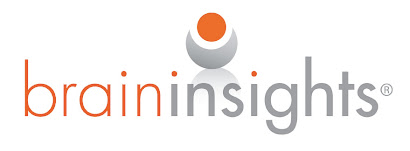What is good for the body... is good for the brain!
Often when we hear the term "healthy" we generally think in terms of our body. However, realizing the positive impact healthy habits have on our brains and the dramatic effect they have on children can make an remarkable difference.
When I am presenting on the effects nutrition has on a child's brain, learning and behavior, I commonly find that people are amazed with this knowledge. This is the reason for my post today. I am sharing this wonderful article written by Lauren Zimet which was previously published in Common Ground Magazine, Nov 2011.
I have had the pleasure of co-presenting with Lauren. She is a dedicated, knowledgeable and passionate professional.
Enjoy the valuable tips she provides for the benefit of healthier brains for everyone!
Nourishing Tips to Nurture New Neurons
BY LAUREN ZIMET
 The brain. We all have one. Yet sometimes it gets neglected. Our brain needs certain things to stay healthy, and when it doesn’t get what it needs, it doesn’t work its best. In fact, sometimes it gets the opposite of what it needs—stuff it doesn’t know what to do with, such as artificial dyes, preservatives, GMOs, the list goes on. When this happens, both our brain and body can have a sensitive reaction that can look different from one person to the next, but that can result in a brain not performing to its highest standard.
The brain. We all have one. Yet sometimes it gets neglected. Our brain needs certain things to stay healthy, and when it doesn’t get what it needs, it doesn’t work its best. In fact, sometimes it gets the opposite of what it needs—stuff it doesn’t know what to do with, such as artificial dyes, preservatives, GMOs, the list goes on. When this happens, both our brain and body can have a sensitive reaction that can look different from one person to the next, but that can result in a brain not performing to its highest standard.
We are born with 100 billion brain cells, and the brain continues to develop after a baby is born. New connections between neurons—the cells in the brain—form quickly from birth to 3 years of age and older, and continue to form
throughout our lives, based on our experiences.This means that we need to
nourish our brain. We need to give it both the experiences and the nutrients it needs to develop.
It helps children to know that with each healthy food they eat, and with each new experience they have, they are making a new connection in their brain.
This is powerful stuff . Imagine a child, face filled with pride, after making a new neural connection by simply taking a nibble of kale.
The following seven tips offer
simple ways you can guide your
choices as they play, learn, work, and grow.
1. Eat a rainbow. Eat a colorful array of organic
fruits and vegetables every day. Be sure
to wash the produce to loosen and rinse away
any dirt and toxins. Kids can do the washing—
they benefit from being part of a team, by having
their own chores within the family.
2. Don’t eat fake stuff. The body really likes
food. Real food, such as whole grains, protein,
lots of colorful vegetables and fruit, and
healthy fats. Limit or eliminate artificial dyes,
colors, and flavors; processed foods; fast foods;
junk foods; hydrogenated fats; sodas; and refined sugars.
omega-3s, also known as essential fatty acids
(EFAs), for proper growth, particularly
for neural development
and maturation of sensory systems.
EFAs speed neural signals
along, making for smoother,
easier, more efficient communication
across synapses. EFAs are
necessary for proper immune
function, cognitive development,
and for skin function and
maintenance. A deficit in EFAs
has been linked to ADHD, dyslexia,
and other behavioral and
psychological disorders. Your
body can’t make EFAs, so you
need to consume them. They are
found in nuts, seeds, olives, seaweed,
and fish. It’s always best to
eat foods that contain vitamins, minerals, and
other essential nutrients, but if you are unsure
that your child is getting a well-balanced diet,
a purified, molecularly distilled fish oil supplement
is a great EFA source. My trusted brand
of choice is Nordic Naturals.
H2O to hydrate—check with your health care
practitioner for how much, but a quick rule is
to divide your body weight by two to get the
approximate number of ounces to drink per
day. Also, take slow, deep breaths to reset and
calm the sensory and neurological system.
Deep breathing helps children self-regulate
and improves immunity, nervous system functioning,
and emotional regulation. A recent
study published in the International Journal of
Nursing Studies reports that deep breathing is
effective for reducing anxiety in children with
asthma.
5. Learn to move and to chill. The brain
But you also need to teach your child how
to relax—for example, by getting out into nature,
reading an entertaining book, or playing
a board game. Long-term stress can be toxic,
and a stressed brain doesn’t learn the same way
as an unstressed brain. Emotional stress has an
impact on a child’s ability to learn. Sustained
stress can damage a developing brain’s architecture,
which can lead to problems in learning,
behavior, and physical and mental health.
thoughts” as a tool to acknowledge and work
through bad, sad, mad, frustrated, and negative thoughts.
Demonstrating positive self-talk in front of your children—
for example, reflecting on how you expertly handled a
difficult or challenging situation—lays a blueprint for how
they may handle their own problems. Negative
thoughts or mistakes can be opportunities to
learn and grow from.
7. Name that feeling. Teaching your child
to label emotions and recognize feelings helps
connect the nonverbal and verbal pathways in
the brain. Strengthening these pathways can
improve a child’s ability to take on another’s
perspective. This is especially useful for children
with learning challenges, who need more
support developing flexible thinking.
Lauren’s Favorite Resources
Healthy Foundations, an education program
that facilitates brain health, nutrition education,
and social thinking for children of all ages

















Comments
3 Responses to “Children and the Brain: Think NUTRITION!” Post Comments (Atom)
Post Comments (Atom)
Post a Comment |
Great blog post and I do not think it is obvious to all paretns that the brain needs to be healthy. I think the hardest point you made is rewire your thinking. I find some children find this really hard to do and requires lots of practice and consciousness.
December 4, 2011 at 1:24 AMI found your blog very informative and it really gives insight to the readers. Thanks for the good information.
December 20, 2011 at 8:22 PMThere are many parents these days that take their children for chiropractic treatment and care. It has been observed that children can take advantage of this treatment method starting from birth till throughout the childhood. Handling a child with ADHD in your house can be a problematic work but it has been observed that chiropractic treatment can help a lot with the symptoms of ADHD.
December 31, 2011 at 7:26 PMChildren suffering from the problem of ADHD or attention deficit/hyperactivity disorder can act out in various ways. They may control themselves, not obey commands and bully other children. These children might get violent and may have rough behavior like throwing things around.
According to a survey by American Chiropractic Association in 1991, the number of chiropractic patients of sixteen years of age and younger has increased to 8.5%. Chiropractic services is the most common alternative method of treatment performed on children and it is completely safe.
A study conducted in 1975 compared the effect of chiropractic treatment and drugs in children suffering from ADHD. The study showed that chiropractic services was twenty four percent more effective than normal drug prescription. It worked over the wide range of symptoms which are common in neurological dysfunction syndrome. So, chiropractic treatment works good with children having ADHD.
It has been observed that children who suffer from the problem of ADHD have successful results with chiropractic treatment. It has also been noticed that children who have vertebral subluxation and do not show any symptoms of ADHD should still have chiropractic services. The best method of treatment in case of ADHD is chiropractic services. It is completely natural and so it does not have any side effects. This makes it very safe for your child. With proper treatment and care, the symptoms of this condition can be helped to a great degree.
Post a Comment